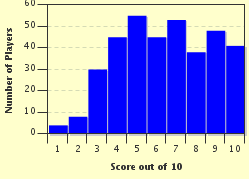Quiz Answer Key and Fun Facts
1. This area in the center of Rome had its beginnings as far back as the 7th century BC when the marshy land between the Palatine and Capitoline Hills was drained, allowing for a common meeting area between them. The remains of many structures can still be seen there today. What is it called?
2. This site for chariot racing is located between the Palatine and Aventine Hills in the Valley of Murcia. Livy's history of Rome states that Lucius Tarquinius Priscus (the 5th King of Rome) built the first raised, wooden seating for spectators during his reign. By what name was it known?
3. The Colosseum's construction began in AD 70, took ten years to complete, and was the largest amphitheatre in the entire empire. By what other name was it known, in honour of the ruling dynasty (Vespasian, Titus, and Domitian) that constructed it?
4. A temple to honour all the Roman gods was first built in by Marcus Agrippa 27 BC, but it burned down. In AD 80 Domitian built another, but it, too, burned down. Emperor Hadrian built the next in AD 126, and it is still standing today, although it is now a Catholic church. What building?
5. Castel Sant'Angelo has stood since its completion in 139 AD, having served many purposes in its nearly two millennium existence. Before it was turned to military purposes, however, it was designed to be a mausoleum. For whom?
6. Named for the Roman Empire's 22nd emperor, the baths pictured here were the second largest constructed in Rome. Built between AD 212 and 216, for whom were they named?
7. This triumphal arch was erected to celebrate the defeat of Maxentius at the Battle of Milvian Bridge after an extended civil war. Who was the victor, who is also known for calling the First Council of Nicaea in AD 325?
8. The Scalinata della Trinitā dei Monti are a wide staircase extending down from the church of the Santissima Trinitā dei Monti a grand total of 136 steps to which piazza?
9. The famous Fontana di Trevi was designed by Nicola Salvi and took thirty years to complete. The name 'Trevi' refers to the fountain's location at the junction of three roads.
10. After decades of insurrections and wars of independence, the modern state of Italy was born in the mid-19th century. This gigantic monument was built in honour of the first king of the newly unified country. What was his name?
Source: Author
reedy
This quiz was reviewed by FunTrivia editor
stedman before going online.
Any errors found in FunTrivia content are routinely corrected through our feedback system.

